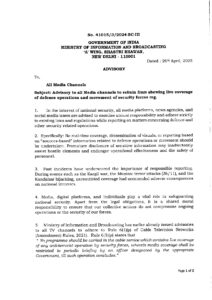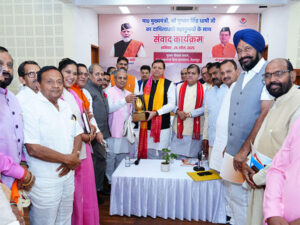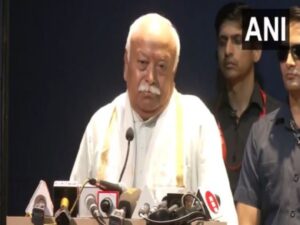Withdrawal of Rs 2,000 note a non-event, will have no impact on economy: ex-finance secretary
New Delhi, May 20 (PTI) Withdrawal of Rs 2,000 currency notes is a ‘non-event’ and will have zero impact on the economy and monetary policy, former finance secretary Subhash Chandra Garg said on Saturday.
The higher denomination currency note of Rs 2,000, he said, was pressed into service at the time of demonetisation in 2016 for ‘accidental reasons’ to meet the temporary currency shortage.
With rapid growth of digital payments over the last five-six years, Garg said withdrawal of Rs 2,000 currency notes, which is actually a replacement by other denominations, will not affect total currency in circulation and therefore will have no monetary policy effect.
“Neither will it affect the operation of India’s economic and financial system. There is going to be zero impact on GDP growth or public welfare,” he told PTI.
In a surprise move, the Reserve Bank on Friday announced withdrawal of Rs 2,000 currency notes from circulation but gave public time till September 30 to either deposit such notes in accounts or exchange them at banks.
It is quite easy to expect almost all the Rs 2,000 currency notes in circulation to come back to RBI and there is unlikely to be any inconvenience or loss to anyone because these notes form a small part of the currency in circulation and not widely used for day-to-day transactions, he said.
Clarifying that the withdrawal of currency notes by RBI is not demonetisation, he said, it is the government which has the authority to withdraw the legal tender status of currency notes, not RBI.
Rs 2,000 currency notes will continue to remain perfect legal tender therefore, he said, adding, RBI’s measures are largely an attempt to nudge people holding these notes to get the same exchanged for other currency notes in circulation.
Garg, who was Economic Affairs Secretary and in-charge of coin and currency division during remonetisation days, said Rs 2,000 notes were introduced not as a well thought out measure but something which was only available readily to latch on.
The government had perhaps approved printing of Rs 2,000 currency notes a few months before demonetisation to introduce a higher denomination note, he said.
The fate of Rs 2,000 currency note was sealed even before it was introduced and it had to make its way out as soon as possible, he added.
Garg said the process of reducing the circulation of Rs 2,000 notes for its eventual phase-out started soon after demonetisation.
The total value of Rs 2,000 currency notes was about Rs 7 lakh crore when an in-principle decision was taken in July-August 2017 to not print any more Rs 2,000 notes, he said, adding, a small quantity of such notes were printed in March-April 2018 to tide over the mini currency notes shortage at that time.
As per an RBI press release, the printing of Rs 2,000 notes was completely stopped in 2018-19.
With the stoppage of printing of such notes, the path of elimination of these notes was firmly secured and the government printed much larger than normally required Rs 500 currency notes in 2018-19 to facilitate withdrawal of Rs 2,000 notes, he said.
Steps to phase out Rs 2,000 notes have brought down the percentage of these notes in circulation to 10.8 per cent in March 2023 from a high nearly 75 per cent in March 2017.
According to ICRA, the deposit accretion of banks could improve marginally in near term due to RBI’s move to withdraw Rs 2,000 notes. This will ease the pressure on deposit rate hikes and could also result in moderation in short-term interest rates, said ICRA senior vice president Karthik Srinivasan.
Such measures further reduce/eliminate the probable cash component in high-value real estate transactions, said Vimal Nadar, head of research at Colliers India.
In the last few years, RERA and demonetisation have brought in significant levels of transparency in real estate, mainly contributing to fair market price determination, Nadar said.






